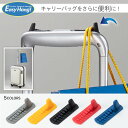Things to know to learn Japanese effectively
Learning Japanese is not about diving in and hoping to one day master it. On the contrary, you need to understand and know the following to plan your study effectively. With this information, your Japanese learning will become clearer, eliminating confusion and ambiguity.

1. Set clear goals
The first step in learning Japanese is to define your specific goals. Do you want to watch Japanese movies without subtitles? Read research papers fluently? Or qualified for your job?
Unfortunately, many people who want to learn Japanese don't have much experience in learning the language. If you've never learned a foreign language before, it's hard to imagine the difficulties and challenges you'll face. As a result, most people give up early in the language learning process.
So having clear goals is extremely important. If you want to be good at Japanese, you need to define what "excellent" means to you in Japanese. Specific and clear goals are more helpful than vague ones. For example, the goal "I want to read the book 'Norwegian Wood' in Japanese" is more specific than the objective "I want to read a book in Japanese".
In addition, you should determine the level of Japanese you want to achieve in the future. The Japanese Language Proficiency Test (JLPT) is a widely used proficiency assessment system in Vietnam, from N1 (highest level) to N5 (lowest level). Mastering a foreign language, including Japanese, is a long and challenging journey. Clear, specific goals will help you have a clearer direction when learning Japanese.
2. Take Japanese language courses
Self-study is not the best way to start learning a new language. Language is a means of human communication, if you speak alone, it will be difficult to learn to speak. Of course, learning through TV, radio and audio tapes is fine, but starting to learn Japanese through these mediums can make you feel lonely and make it harder to absorb the content.
Therefore, taking Japanese courses provides you with an environment in which to learn. Having a teacher's guidance will help you build a strong foundation and basic knowledge of grammar, ensuring you stay on track and make the most of your study time.
3. Find the right textbook
Currently, there are 3 popular textbooks: Minna no Nihongo, Shin Nihongo and Genki. Each curriculum has its own strengths and weaknesses.
Minna no Nihongo: This series is widely used in many Japanese language schools and provides a comprehensive approach to learning Japanese. It covers all aspects of language, including grammar, vocabulary, listening and speaking. Explanations are in Japanese with accompanying translations in various languages. It is suitable for both classroom learning and self-study.
Shin Nihongo: This series is designed for beginners and focuses on practical communication skills. It includes clear explanations, plenty of exercises, and emphasis on real-life situations. Vocabulary and grammar are introduced gradually making it easier for beginners to grasp the language.
Genki: Genki is another popular textbook series that is widely used in Japanese language courses. It offers a well-structured curriculum with a good balance of grammar, vocabulary, and conversation practice. The explanations are in English, which can be helpful for learners who are not yet comfortable reading in Japanese.
When choosing a set of textbooks, consider your learning style, interests, and goals. You should also browse through sample chapters or reviews to better understand which series is right for your needs.
In addition, you can supplement your learning with other resources such as online courses, language exchange programs, and language apps to improve your Japanese language skills. Practice regularly, immerse yourself in the language as much as possible and look for opportunities to interact with native speakers to further improve your level.
Good luck with your Japanese learning journey!
Related Products









































































































